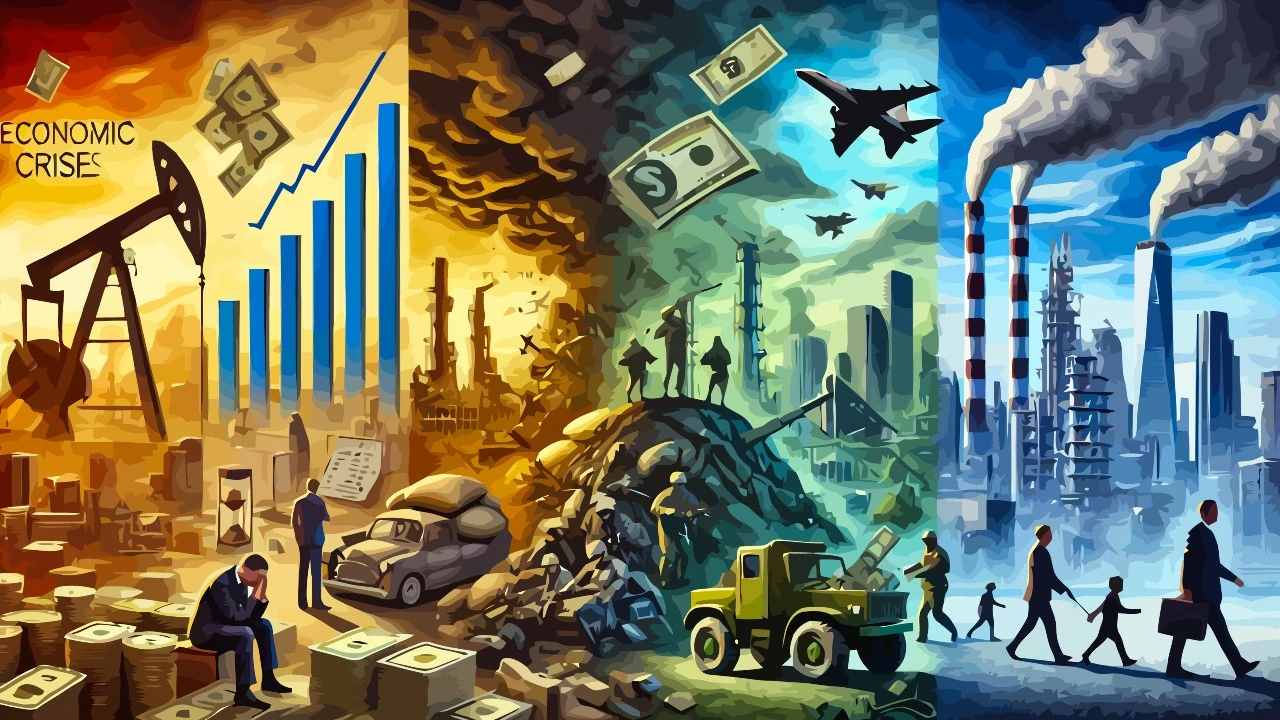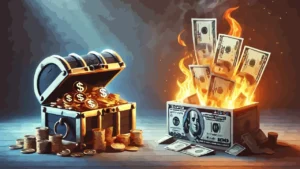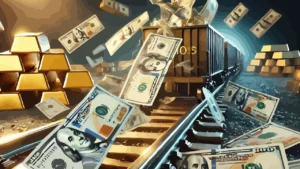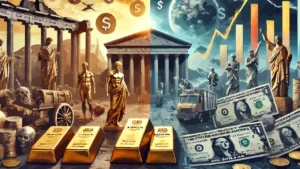Monetary crises have always marked the history of the global economy, testing nations and financial systems. Looking back, three recurring dynamics emerge to resolve them: inflation that devalues money, war that restructures the economic order, or the production of goods and services that generates new wealth. In this article, we will explore these three solutions, analyzing how they manifested themselves at key moments in history.
Understanding these mechanisms can help us interpret current economic challenges and predict possible future developments. Ultimately, every crisis brings with it opportunities, but everything depends on the choices made by governments and populations.
Contents
#1. Inflation: the quick fix
Inflation is often the first reaction to a monetary crisis. When a state has difficulty meeting its debts or maintaining financial stability, a quick solution is to print more money or devalue its currency . This approach has been used many times in history, with different consequences depending on the context:
- Weimar Germany (1920-1923): Hyperinflation destroyed the savings of the middle class, with prices doubling in a few hours and a total loss of confidence in the mark,
- Argentina (2001 and beyond): The country has cyclically faced currency devaluations and capital flight, with a constant loss of purchasing power for the population,
- Zimbabwe (2008): One of the most extreme inflations in modern history, with trillion-dollar notes used to buy a simple loaf of bread.
👉 Read also: Devaluation of Currencies of the Last Century
Inflation can provide temporary relief, as it reduces the real burden of debt and artificially stimulates domestic demand. However, it has devastating long-term effects: erosion of purchasing power, loss of confidence in the currency and social instability. Furthermore, when the population loses confidence in the monetary system, there are phenomena of dollarization or the use of safe havens such as gold and cryptocurrencies.
History shows that inflationary policies are easy to start, but difficult to stop without painful consequences. Governments and central banks must therefore find a balance between the need to stimulate the economy and the risk of triggering an out-of-control spiral.mia e il rischio di innescare una spirale fuori controllo.
#2. War: the violent reset
When the monetary crisis becomes unsustainable and geopolitical interests become intertwined, war becomes a mechanism to reset the economic order. Some examples in history show how armed conflicts have been directly or indirectly linked to economic and monetary crises:
- World War I: Partly triggered by economic tensions and colonial competition, it saw the collapse of the monetary balances of the time and the end of the gold standard,
- World War II: The 1929 crisis and German hyperinflation fueled the rise of Nazism and global conflict, which eventually led to a new world economic order,
- Petrodollar crisis and conflicts in the Middle East: The oil shocks of the 1970s led to military tensions and wars, often related to the control of energy resources.
War has an immediate destructive effect, but in some cases it creates the conditions for economic recovery based on reconstruction and new trade alliances. After World War II, for example, the Marshall Plan helped Europe regenerate and led to the economic boom of the 1950s and 1960s. However, modern conflicts tend to have more unpredictable consequences, with economic wars, sanctions, and new forms of global competition.
Today, the world is more interconnected than ever, and a large-scale war could have devastating effects on the entire global economic system. The hope is that diplomacy and cooperation can prevail over military solutions.La speranza è che la diplomazia e la cooperazione possano prevalere sulle soluzioni militari.
#3. Production: the sustainable solution
While inflation and war are drastic and destructive solutions, the only real remedy for a monetary crisis is economic growth through the production of goods and services. Some historical examples show how this approach has led to periods of lasting prosperity:
- New Deal (1933-1939): after the crisis of ’29, the USA invested in infrastructure and employment, creating millions of jobs and reviving confidence in the markets,
- Post-war economic boom (1950s and 1960s): European and Japanese reconstruction drove growth through a mix of public investment and industrial innovation,
- China’s Rise (1980s and 1990s): From the ruins of a planned economy, China became a world power through manufacturing and integration into global markets.
Unlike inflation and war, production creates real value and widespread well-being, providing a lasting solution to monetary crises. Healthy economic growth relies on innovation, efficiency, and investment in human capital. Without these elements, even the best economic policies risk failure.uesti elementi, anche le migliori politiche economiche rischiano di fallire.
#4. What we can expect today
In the current context, monetary crises are often addressed with expansionary monetary policies and government interventions. However, if the production of goods and services does not grow sustainably, the risk of inflation and instability remains high.
History teaches us that the best solutions are those based on the creation of real value, but the temptation to quickly resolve crises through drastic measures is always around the corner. Today we see signs of uncertainty in global markets, with record levels of debt and rising geopolitical tensions. The question to be asked is whether the world will choose the path of productive growth or fall back into old patterns of inflation and conflict. The future of the global economy depends on this crucial choice and in all honesty I give 33% to each possibility.




Leave a Reply